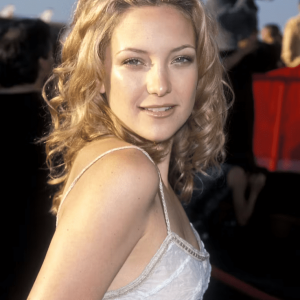Behind the cheerful ukulele tunes and sun-drenched beaches lies a world of intrigue, drama, and charm. Hawaiian Eye, a classic television series that aired from 1959 to 1963, captivated audiences with its unique blend of tropical paradise and thrilling detective adventures. Set against the stunning backdrop of Honolulu, Hawaii, the show offered viewers an irresistible escape into a world of mystery and island allure. Let’s dive into what made Hawaiian Eye an enduring piece of television history.
The Perfect Blend of Paradise and Suspense

At its core, Hawaiian Eye was about a private detective agency solving mysteries for the elite guests of the luxurious Hawaiian Village Hotel. From petty crimes to high-stakes cases, the show delivered a captivating mix of drama and suspense, all set against the idyllic beauty of the Hawaiian Islands.
What made the series stand out was its seamless combination of two seemingly opposite genres: the gritty world of detective drama and the carefree ambiance of tropical adventure. Imagine sipping a Mai Tai while unraveling a whodunit—that’s the essence of Hawaiian Eye.
The Star-Studded Cast That Defined the Show
The magic of Hawaiian Eye came alive through its dynamic and charismatic ensemble cast. Each character brought their own flavor to the team, creating a balance of charm, humor, and drama.
Robert Conrad as Tom Lopaka
Tom Lopaka was the epitome of cool—suave, fearless, and quick-witted. Played by Robert Conrad, Lopaka exuded confidence and charisma, making him an unforgettable private investigator. Whether chasing down criminals or charming his way through tricky situations, Lopaka was always a step ahead.
Connie Stevens as Cricket Blake
Cricket Blake, played by Connie Stevens, was more than just a singer at the Hawaiian Village Hotel. As a part-time sleuth, she brought a playful energy to the show, often uncovering key clues with her resourcefulness. Her musical performances, including hits like Sixteen Reasons, became iconic moments that added glamour and sophistication to the series.
Anthony Eisley as Tracy Steele
Tracy Steele, portrayed by Anthony Eisley, served as Lopaka’s business partner and the grounded, level-headed counterpart to Lopaka’s daring escapades. Eisley’s calm demeanor and thoughtful approach provided a perfect balance to the show’s high-energy thrills.
Poncie Ponce as Kim
Kim, the witty and ever-resourceful taxi driver played by Poncie Ponce, brought humor and authenticity to the series. His ukulele tunes and connections to Honolulu’s underworld made him a valuable asset to the detective team, as well as a beloved character who added a genuine Hawaiian flair.
Grant Williams as Greg MacKenzie
When Grant Williams joined the cast in later seasons, his character, Greg MacKenzie, added fresh intrigue and sophistication. Known for his work in The Incredible Shrinking Man, Williams brought depth and complexity to the team, further enhancing the series’ appeal.
Hawaii: The Star Behind the Scenes
One of the most captivating aspects of Hawaiian Eye was its breathtaking setting. Filmed against the lush tropical landscapes and shimmering blue waters of Hawaii, the show offered a visual escape that transported viewers straight to paradise. Honolulu itself became a character in the series, with its iconic landmarks and vibrant culture providing a rich backdrop for the unfolding mysteries.
While the show reflected a 1960s mainland perspective of Hawaii, it still celebrated elements of Hawaiian culture. From local traditions to Poncie Ponce’s authentic portrayal of island humor, the series captured a spirit that resonated with viewers worldwide.
The Role of Music in Hawaiian Eye
Music played a central role in Hawaiian Eye, adding a unique layer of charm and entertainment. Connie Stevens’ performances at the Hawaiian Village Hotel became a signature feature, blending jazz, pop, and tropical melodies into the storyline. Meanwhile, Poncie Ponce’s ukulele offered a touch of authentic Hawaiian sound, connecting the show to its island roots.
The integration of music wasn’t just a backdrop—it was a character in itself, enhancing the storytelling and creating moments that lingered in viewers’ minds long after the credits rolled.
Pop Culture Impact of Hawaiian Eye

Although Hawaiian Eye ended in 1963, its influence has endured. The series left a lasting mark on pop culture, introducing many viewers to the allure of Hawaii for the first time. It wasn’t just a television show; it was an invitation to dream of sandy beaches, swaying palm trees, and tropical breezes.
The show also paved the way for future television series that blended exotic settings with gripping drama. Its legacy as a trailblazer in merging detective tales with escapist entertainment cemented its place in television history.
Why Hawaiian Eye Still Resonates Today
Decades later, Hawaiian Eye remains a beloved piece of vintage television. For fans of classic TV, it offers a nostalgic journey back to an era of stylish characters, clever mysteries, and stunning visuals. Its charm lies in its simplicity—an uncomplicated yet compelling blend of suspense, humor, and tropical charm.
Even today, the series serves as a reminder of a time when the allure of paradise was just a click away. Whether you’re discovering it for the first time or revisiting it with fond memories, Hawaiian Eye continues to captivate audiences with its timeless appeal.
Conclusion: A Journey Worth Taking

Hawaiian Eye was more than just a television show; it was an adventure wrapped in the enchanting beauty of the Hawaiian Islands. With its charismatic cast, stunning visuals, and unforgettable music, the series captured the hearts of viewers and carved out a unique space in television history.
Even now, it stands as a testament to the enduring allure of paradise, proving that a little mystery paired with a lot of sunshine can go a long way. So, why not let Hawaiian Eye whisk you away to a world of intrigue, charm, and island magic? It’s a journey you won’t soon forget.


